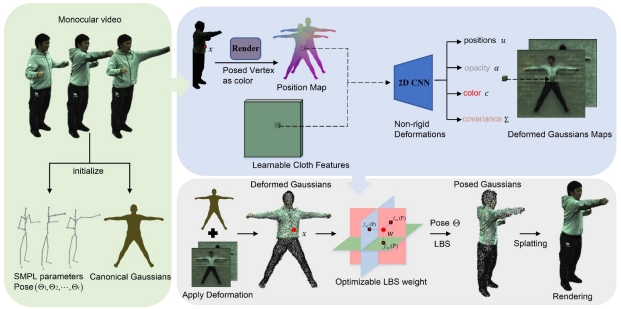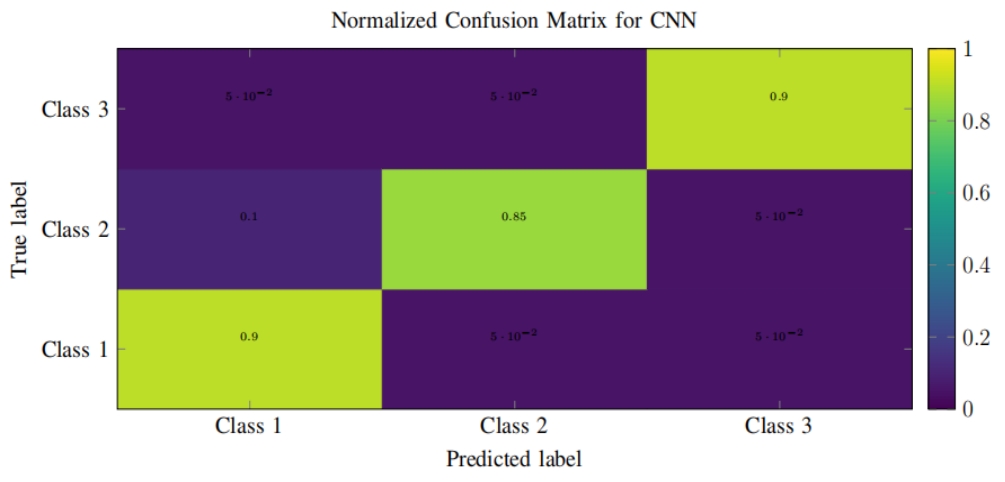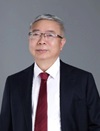
Asia Pacific Academy of Science Pte. Ltd. (APACSCI) specializes in international journal publishing. APACSCI adopts the open access publishing model and provides an important communication bridge for academic groups whose interest fields include engineering, technology, medicine, computer, mathematics, agriculture and forestry, and environment.



Beyond the pixelated mirror: Understanding avatar identity and its impact on in-game advertising and consumer behavior
Vol 5, Issue 1, 2024
Download PDF
Abstract
This article examines the complex dynamics between avatars and in-game advertising, probing how virtual representations influence consumer behavior within digital environments. It delves into the psychological interplay between self-perception and avatar embodiment, suggesting that while younger users may treat avatars as accessories showcasing personal interests, adults tend to opt for idealized selves, affecting their interaction with and responsiveness to virtual marketing. The study contemplates the avatar’s function as both a consumer and influencer in the expanding metaverse, considering the escalating integration of branded items in games. It also highlights potential shifts in consumption patterns as digital and physical realities converge. The article advocates for future research to explore the multifaceted impacts of avatars, such as age-related differences, the role of artificial intelligence in self-representation, and cross-platform avatar utilization, utilizing longitudinal data from sources like Second Life and social media profiling. In synthesizing these perspectives, the article underscores the necessity to further understand how avatars contribute to shaping digital consumerism, paving the way for a new domain in consumer psychology that navigates the evolving interface of the metaverse. The findings suggest that the nuances of digital identity formation are significant factors in the effectiveness of in-game advertising and indicate a transformative phase in marketing strategies tailored for virtual worlds.
Keywords
References
- Hsu CL, Lu HP. Consumer behavior in online game communities: A motivational factor perspective. Computers in Human Behavior. 2007, 23(3): 1642–1659. doi: 10.1016/j.chb.2005.09.001
- Nguyen P, Nguyen L. A study on game consumer behavior. Management Science Letters. 2021, 11(9): 2323–2330. doi: 10.5267/j.msl.2021.6.002
- Qiao W, Yin X. Understanding the impact on energy transition of consumer behavior and enterprise decisions through evolutionary game analysis. Sustainable Production and Consumption. 2021, 28: 231–240. doi: 10.1016/j.spc.2021.04.015
- de Souza LLF, de Freitas AAF. Consumer behavior of electronic games’ players: A study on the intentions to play and to pay. Revista de Administração (São Paulo). 2017, 52(4): 419–430. doi: 10.1016/j.rausp.2017.08.004
- Guo Y, Barnes SJ. Explaining purchasing behavior within World of Warcraft. Journal of Computer Information Systems. 2012, 52(3): 18–30. doi: 10.1080/08874417.2012.11645555
- Miller K. Grove street grimm: Grand Theft Auto and digital folklore. Journal of American Folklore. 2008, 121(481): 255–285.
- Kumar SS, Prathima M, Sanmath A, Dutta A. An empirical study on esports consumer consumption patterns, motives and its effect on consumer behavior. Baltic Journal of Law & Politics. 2023, 16(3): 3135–3148. doi: 10.2478/bjlp-2023-00000234
- Jordan H, Buck L, Shinde P, McDonnell R. What’s my age again? Exploring the impact of age on the enfacement of current state-of-the-art avatars. In: Proceedings of the 2023 IEEE Conference on Virtual Reality and 3D User Interfaces Abstracts and Workshops (VRW); 25–29 March 2023; Shanghai, China. pp. 865–866. doi: 10.1109/VRW58643.2023.00275
- Fong K, Mar RA. What does my avatar say about me? Inferring personality from avatars. Personality and Social Psychology Bulletin. 2015, 41(2): 237–249. doi: 10.1177/0146167214562761
- Bélisle JF, Bodur HO. Avatars as information: Perceptions of consumers based on their avatars in virtual worlds. Psychology & Marketing. 2010, 27(8): 741–765. doi: 10.1002/mar.20354
- Etemad-Sajadi R. The impact of online real-time interactivity on patronage intention: The use of avatars. Computers in Human Behavior. 2016, 61: 227–232. doi: 10.1016/j.chb.2016.03.045
- Wang LC, Fodness D. Can avatars enhance trust and emotion in online retail sales? International Journal of Electronic Marketing and Retailing. 2010, 3(4): 341–362. doi: 10.1504/IJEMR.2010.036881
- Moon JH, Kim E, Choi SM, Sung Y. Keep the social in social media: The role of social interaction in avatar-based virtual shopping. Journal of Interactive Advertising. 2013, 13(1): 14–26. doi: 10.1080/15252019.2013.768051
- McGoldrick PJ, Keeling KA, Beatty, SF. A typology of roles for avatars in online retailing. Journal of Marketing Management. 2008, 24 (3–4): 433–461. doi: 10.1362/026725708X306176
- Jin SAA. Avatars mirroring the actual self versus projecting the ideal self: The effects of self-priming on interactivity and immersion in an exergame, Wii Fit. CyberPsychology & Behavior. 2009, 12(6): 761–765. doi: 10.1089/cpb.2009.0130
- Elsharnouby MH, Jayawardhena C, Liu H, Elbedweihy AM. Strengthening consumer-band relationships through avatars. Journal of Research in Interactive Marketing. 2022, 17(4): 581–601. doi: 10.1108/JRIM-02-2022-0035
- Mull I, Wyss, J, Moon E, Lee SE. An exploratory study of using 3D avatars as online salespeople: The effect of avatar type on credibility, homophily, attractiveness and intention to interact. Journal of Fashion Marketing and Management. 2015, 19(2): 154–168. doi: 10.1108/JFMM-05-2014-033
- Taylor DG. Putting a face with a name: Avatars, relationship marketing and services failure/recovery. International Journal of Electronic Marketing and Retailing. 2010, 3(4): 363–381. doi: 10.1504/IJEMR.2010.036882
- Taylor N, Bergstrom K, Jenson J, de Castell, S. Alienated playbour: Relations of production in EVE online. Games and Culture. 2015, 10(4): 365–388. doi: 10.1177/1555412014565507
- Aguirre‐Rodriguez A, Boveda-Lambie AM, Miniard PW. The impact of consumer avatars in internet retailing on self-congruity with brands. Marketing Letters. 2015, 26(4): 631–641. doi: 10.1007/s11002-014-9296-z
- Bente G, Dratsch T, Kaspar K, et al. Cultures of Trust: Effects of avatar faces and reputation scores on German and Arab players in an online trust-game. PLoS ONE. 2014, 9(6): e98297. doi: 10.1371/journal.pone.0098297
- Moriuchi E. Bridging social marketing and technology in the disability field: An empirical study on the role of cybernetic avatar and social inclusion. Journal of Social Marketing. 2023, 13(2): 218–240. doi: 10.1108/JSOCM-05-2022-0111
- Wei J. Self-representation through online avatars in major online contexts among Chinese university students. Journal of Education, Humanities and Social Sciences. 2023, 8: 2171–2184.
- Yao Q, Kuai L, Jiang L. Effects of the anthropomorphic image of intelligent customer service avatars on consumers’ willingness to interact after service failures. Journal of Research in Interactive Marketing. 2023, 17(5): 734–753. doi: 10.1108/JRIM-06-2022-0164
- Musammem PY. Investigating the relationship between online advertising and the level of customer satisfaction in telecommunication companies in Faryab Province. Integrated Journal for Research in Arts and Humanities. 2023, 3(1): 71–78. doi: 10.55544/ijrah.3.1.13
- Shiju BS. Digital advertising and its impact on online consumer buying behavior. Journal of Pharmaceutical Negative Results. 2023. doi: 10.47750/pnr.2022.13.S09.917
- Hussain SI, Chimhundu R. Effects on consumer purchase intentions through online marketing activities: Evidence from Australian retail sector consumers. International Journal of Arts and Humanities Studies. 2023, 3(1): 16–25. doi: 10.32996/Ijahs.2023.3.1.3
- Arora N, Rana M, Prashar S. Empathy toward social media advertisements: The moderating role of ad intrusiveness. Journal of Promotion Management. 2023, 29(4): 535–568. doi: 10.1080/10496491.2022.2163038
- Alghiffari AP, Matusin IO. Antecedents of customer loyalty on AI Chatbot users in banking applications. Jurnal Pendidikan Tambusai. 2023, 7(2): 18915–18927. doi: 10.31004/jptam.v7i2.9380
- Bong SL, Adriawan ABY, Kamilah G, Madyatmadja ED. Analysis of consumer behavior in online shopping on social media. In: 2023 International Conference on Cyber Management and Engineering (CyMaEn); 26–27 January 2023; Bangkok, Thailand. pp. 449–453. doi: 10.1109/CyMaEn57228.2023.10051027
- Wu Y, Gui X, Wisniewski PJ, Li Y. Do streamers care about bystanders’ privacy? An examination of live streamers’ considerations and strategies for bystanders’ privacy management. Proceedings of the ACM on Human-Computer Interaction 2023; 7(CSCW1): 1–29. doi: 10.1145/3579603
- Al Sokkar A, Law LCE, Almajali D, Al Shinwan M. The effect of multimodality on customers’ decision-making and experiencing: A comparative study. International Journal of Data and Network Science. 2023, 7(1). doi: 10.5267/j.ijdns.2022.12.012
- Reinholtz N, Bartels DM, Parker JR. On the mental accounting of restricted-use funds: How gift cards change what people purchase. Journal of Consumer Research. 2015, 42(4): 596–614. doi: 10.1093/jcr/ucv045
- Viera VA, Liu RL, de Mello VG. The mediating role of Brand Engagement in the Self Concept (BESC) in explaining consumer response: A meta-analytic review. Journal of Marketing Theory and Practice. 2023, 31(1): 97–114. doi: 10.1080/10696679.2021.2004379
- Yu K, Wen S, Xu W, et al. Cheer for me: Effect of non-player character audience feedback on older adult users of virtual reality exergames. Virtual Reality. 2023, 27: 1887–1903. doi: 10.1007/s10055-023-00780-5
- You R, Zhou Y, Zheng W, et al. BlueVR: Design and evaluation of a virtual reality serious game for promoting understanding towards people with color vision deficiency. Proceedings of the ACM on Human-Computer Interaction 2023; 7(CHI PLAY): 289–318. doi: 10.1145/3611031
- Park J, Kim N. Examining self-congruence between user and avatar in purchasing behavior from the metaverse to the real world. Journal of Global Fashion Marketing. 2023, 15(1): 23–38. doi: 10.1080/20932685.2023.2180768
- Kim H, Park J, Lee IK. “To be or not to be me?”: Exploration of self-similar effects of avatars on social virtual reality experiences. IEEE Transactions on Visualization and Computer Graphics. 2023, 29(11): 4794–4804. doi: 10.1109/TVCG.2023.3320240
- Zimmermann D, Wehler A, Kaspar K. Self-representation through avatars in digital environments. Current Psychology. 2023, 42: 21775–21789. doi: 10.1007/s12144-022-03232-6
- Lösel G. Puppets, pets or deputies. On the relationship between actors and avatars. In: Mersch D, Rey A, Grunwald T, et al. (editors). Actor & Avatar: A Scientific and Artistic Catalog. transcript Verlag; 2023. pp. 224–236. doi: 10.1515/9783839467619-032
- Shih MT, Lee YC, Huang CM, Chan L. “A feeling of déjà vu”: The effects of avatar appearance-similarity on persuasiveness in social virtual reality. Proceedings of the ACM on Human-Computer Interaction 2023; 7(CSCW2): 1–31. doi: 10.1145/3610167
- Saunders J, Namboodiri V. READ avatars: Realistic emotion-controllable audio driven avatars. arXiv. 2023. doi: 10.48550/arXiv.2303.00744
- El Ali A, Lee S, Cesar P. Social virtual reality avatar biosignal animations as availability status indicators. arXiv. 2023. doi: 10.48550/arXiv.2302.05172
- Han E, Miller MR, DeVeaux C, et al. People, places, and time: A large-scale, longitudinal study of transformed avatars and environmental context in group interaction in the metaverse. Journal of Computer-Mediated Communication. 2023, 28(2): zmac031. doi: 10.1093/jcmc/zmac031
- Misterska E, Górski F, Tomaszewski M, et al. “Scoliosis 3D”—A virtual-reality-based methodology aiming to examine AIS females’ body image. Applied Sciences. 2023, 13(4): 2374. doi: 10.3390/app13042374
- Yang S, Xiong G, Mao H, Ma M. Virtual fitting room effect: Moderating role of body mass index. Journal of Marketing Research. 2023, 60(6): 1221–1241. doi: 10.1177/00222437231154871
- Presti P, Galasso GM, Ruzzon D, et al. Architectural experience influences the processing of others’ body expressions. PNAS. 2023, 120(41): e2302215120. doi: 10.1073/pnas.2302215120/-/DCSupplemental
- Park I, Sah YJ, Lee S, Lee D. Avatar-mediated communication in video conferencing: Effect of self-affirmation on debating participation focusing on moderation effect of avatar. International Journal of Human–Computer Interaction. 2023, 39(3): 464–475.
- Mack K, Hsu RCL, Monroy-Hernández A, et al. Towards inclusive avatars: Disability representation in avatar platforms. In: Proceedings of the 2023 CHI Conference on Human Factors in Computing Systems; 23–28 April 2023; Hamburg, Germany. pp. 1–13. doi: 10.1145/3544548.3581481
- Boban L, Strauss L, Decroix H, et al. Unintentional synchronization with self-avatar for upper- and lower-body movements. Frontiers in Virtual Reality. 2023, 4: 1073549. doi: 10.3389/frvir.2023.1073549
- van Ryn L, Apperley T, Clemens J. Avatar economies: Affective investment from game to platform. New Review of Hypermedia and Multimedia. 2018, 24(4): 291–306. doi: 10.1080/13614568.2019.1572790
- Bostan B. Player motivations: A psychological perspective. Computers in Entertainment. 2009, 7(2): 1–26. doi: 10.1145/1541895.1541902
- Ghosh T, Sreejesh S, Dwivedi YK. Brands in a game or a game for brands? Comparing the persuasive effectiveness of in‐game advertising and advergames. Psychology & Marketing. 2022, 39(12): 2328–2348. doi: 10.1002/mar.21752
- Prakash D. Protection of trademarks in virtual reality environment. Available online: https://deliverypdf.ssrn.com/delivery.php?ID=414065068026024127028066069117084002017016005008033085110094122005099068122064083004003032103103116031046075068115001017127098055010000046009119012081080088127077073009009083084000011012093028106006091119092125093101075107073086024080017116023101020103&EXT=pdf&INDEX=TRUE (accessed on 25 January 2024).
- Hutson J, Coble K, Kshetri N, Smith A. Exploring the intersection of digital marketing and retail: Challenges and opportunities in AI, privacy, and customer experience. In: Confronting Security and Privacy Challenges in Digital Marketing. IGI Global; 2023. pp. 50–72.
- Hanbazazah A, Reeve C, Abuljadail M. Advergames and consumer behaviour: A quantitative comparative analysis of the United Kingdom and Saudi Arabia. International Journal of Marketing Studies. 2022, 14(2): 113–120. doi: 10.5539/ijms.v14n2p113
- Ho SH, Lin YL, Yang YT. In-game advertising: Consumers’ attitude and the effect of product placements on memory. African Journal of Business Management. 2011, 5(24): 10117–10127. doi: 10.5897/AJBM11.377
- Watanabe K, Ho BQ. Avatar-mediated service encounters: Impacts and research agenda. The Service Industries Journal. 2023, 43(3–4): 134–153. doi: 10.1080/02642069.2023.2169277
Supporting Agencies
Copyright (c) 2024 Kyle Coble, Jeremiah Ratican, James Hutson

This work is licensed under a Creative Commons Attribution 4.0 International License.

This site is licensed under a Creative Commons Attribution 4.0 International License (CC BY 4.0).

Prof. Zhigeng Pan
Director, Institute for Metaverse, Nanjing University of Information Science & Technology, China

Prof. Jianrong Tan
Academician, Chinese Academy of Engineering, China
Conference Time
December 15-18, 2025
Conference Venue
Hong Kong Convention and Exhibition Center (HKCEC)
...
Metaverse Scientist Forum No.3 was successfully held on April 22, 2025, from 19:00 to 20:30 (Beijing Time)...
We received the Scopus notification on April 19th, confirming that the journal has been successfully indexed by Scopus...
We are pleased to announce that we have updated the requirements for manuscript figures in the submission guidelines. Manuscripts submitted after April 15, 2025 are required to strictly adhere to the change. These updates are aimed at ensuring the highest quality of visual content in our publications and enhancing the overall readability and impact of your research. For more details, please find it in sumissions...






.jpg)
.jpg)

